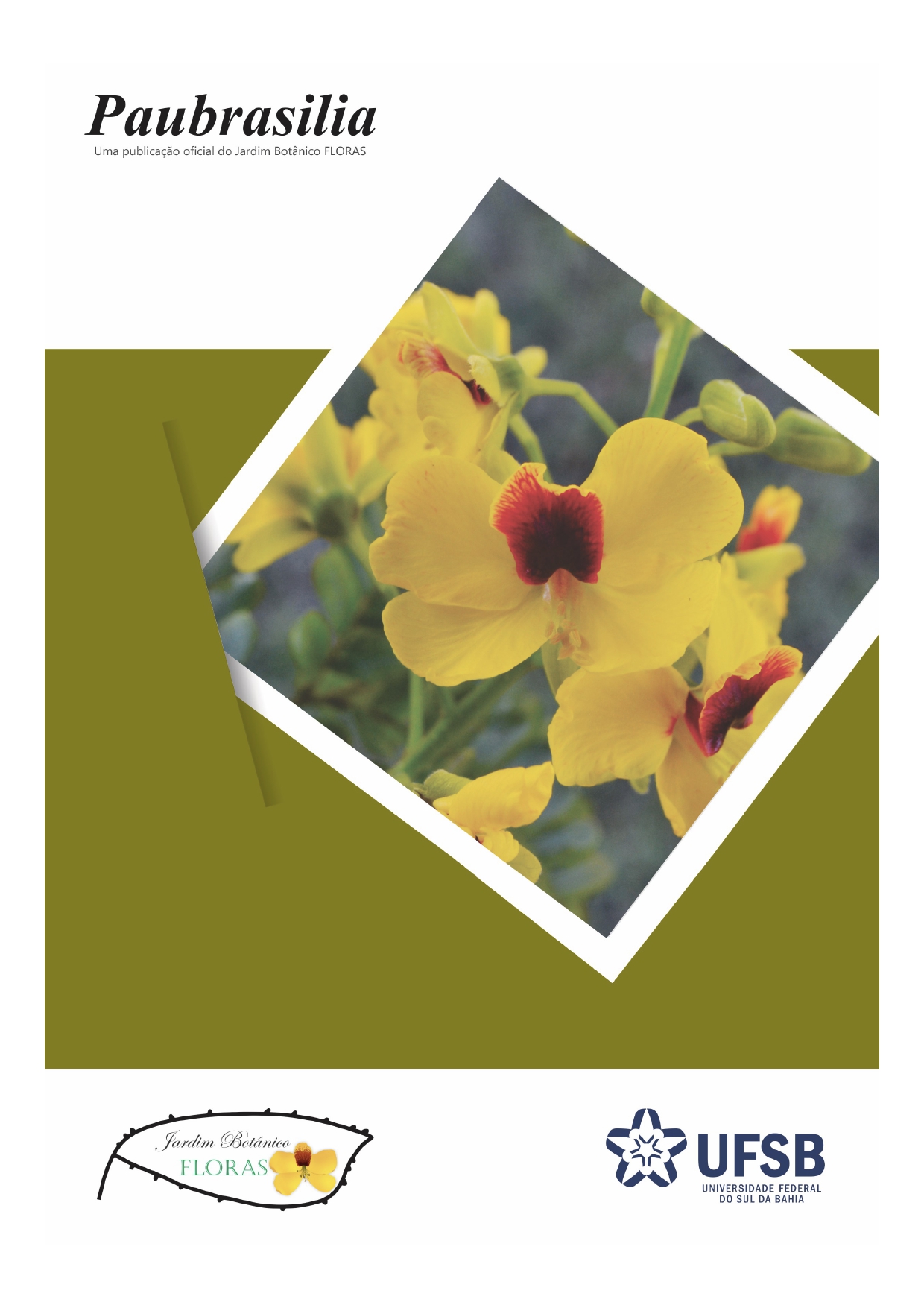Phytosociology of shrub and tree composition of the Cutia Stream, Boa Vista do Tupim, Bahia, Brasil
DOI:
https://doi.org/10.33447/paubrasilia.2023.0089Keywords:
Floristics, Forest composition, Remaining vegetationAbstract
This study aimed to evaluate the phytosociology of the tree-shrub stratum of a segment of riparian forest in the Cutia Stream, in Boa Vista do Tupim, Bahia. Thirty-four transects of 50 m were allocated in the area with points established every 10 m. There were 816 individuals distributed in 64 genera, 28 families and 83 species. The largest IVI was from Astronium urundeuva (M. Allemão) Engl. (31.98%) and the Fabaceae family (79.01%), the most adapted specie was Colicodendron yco (Mart.) Mart. The density was 307 individuals.ha-1 and the basal area 10.6 cm2.ha-1. The Shannon-Wiener diversity index was H' = 3.484 and the Pielou evenness index was J'= 0.780. There was no prevalence of pioneer species in the area. Phytosociological information on the tree-shrub component can contribute to future ecological restoration projects or recovery of riparian forests in the middle section of the Paraguaçu Hydrographic Basin.
Downloads
Published
How to Cite
Conference Proceedings Volume
Section
License
Copyright (c) 2023 Daniel de Almeida Ferreira, Flávio França, Efigênia de Melo

This work is licensed under a Creative Commons Attribution 4.0 International License.
By submitting manuscripts for publication in the journal, authors expressly agree to the following terms:
1 - Authors retain copyright on their manuscript and grant the right of first publication to the journal, with the work simultaneously licensed under the Creative Commons Attribution 4.0 International License, allowing it to be shared, as long as authorship and initial publication in Paubrasilia are acknowledged, with proper indication of volume, number (if any), page number (or elocation-id), and year in which the paper was published;
2 - Authors are allowed to enter into additional contracts separately, for non-exclusive distribution of the version of the paper published in Paubrasilia (e.g., publishing in an institutional repository or as a book chapter), provided that authorship and initial publication in this journal are acknowledged, with proper indication of volume, number (if any), page number (or elocation-id), and year in which the paper was published.











